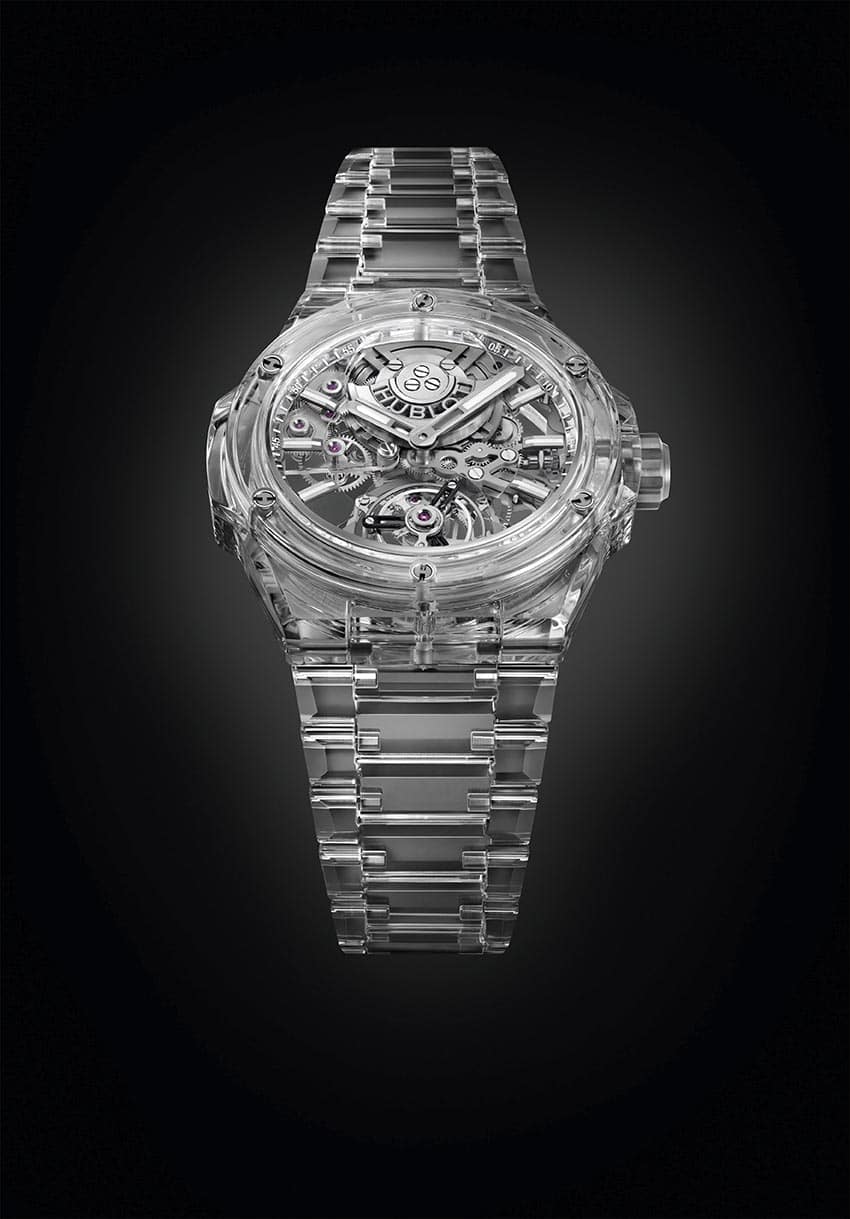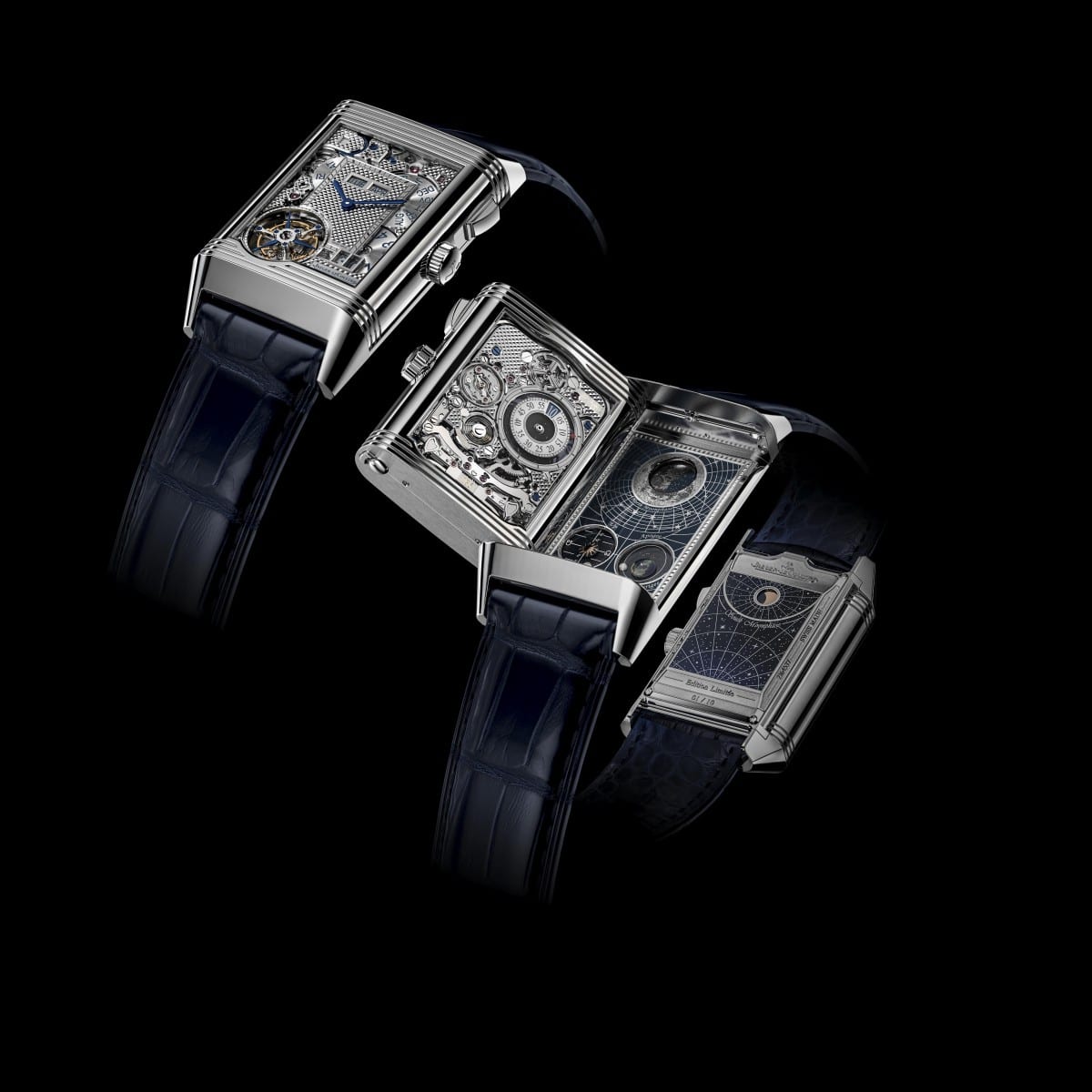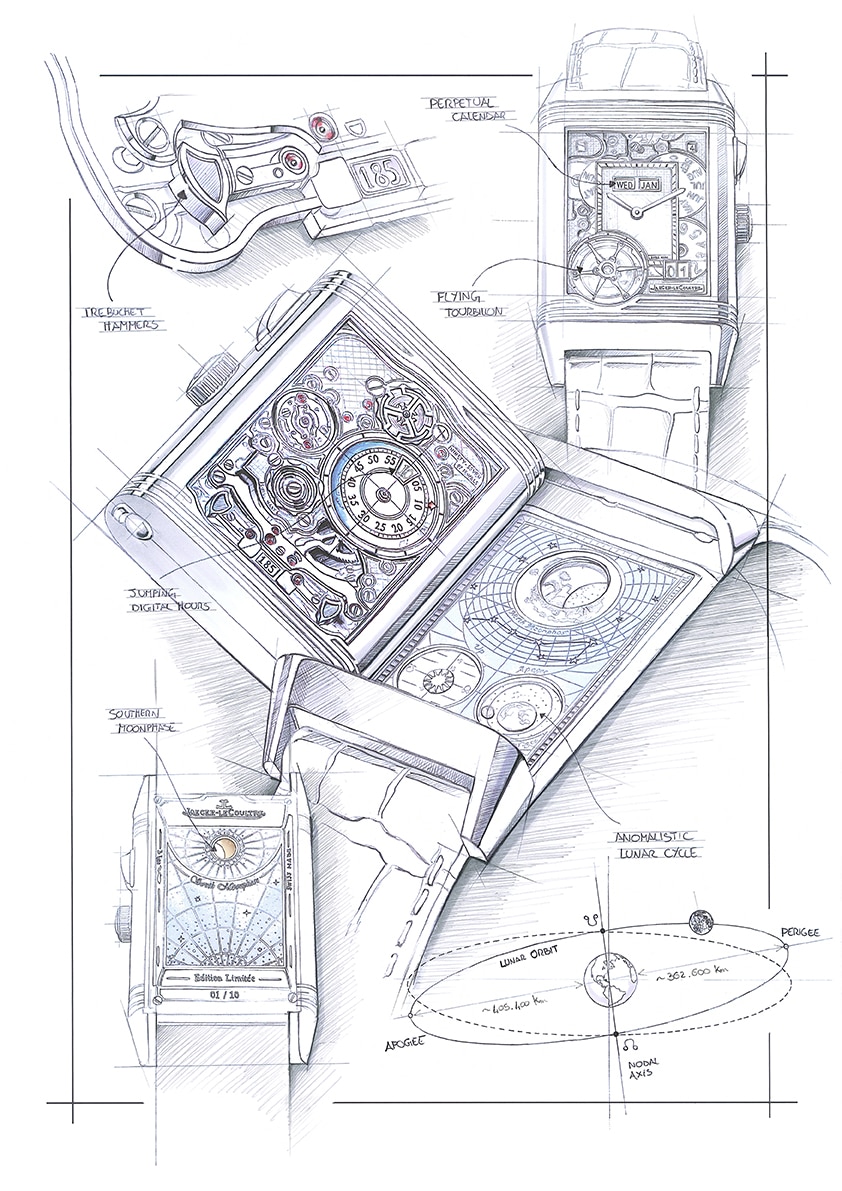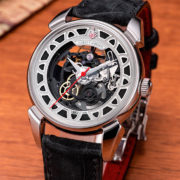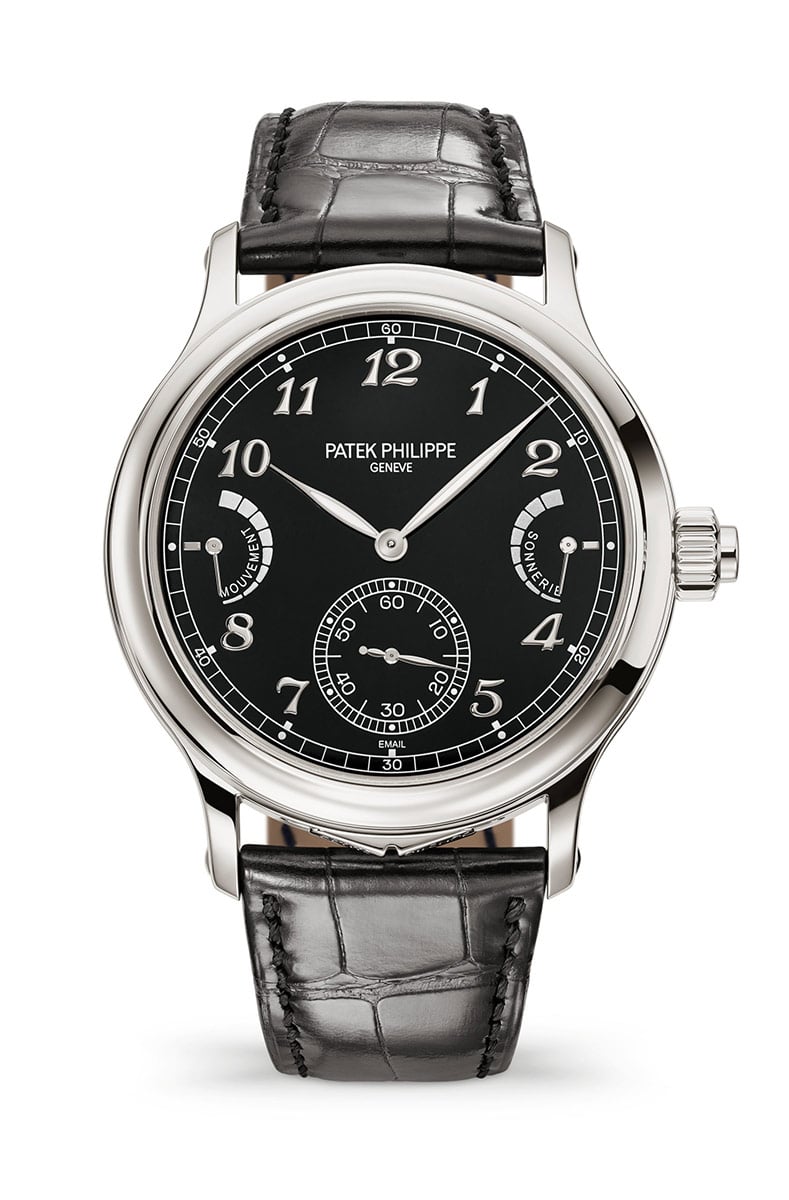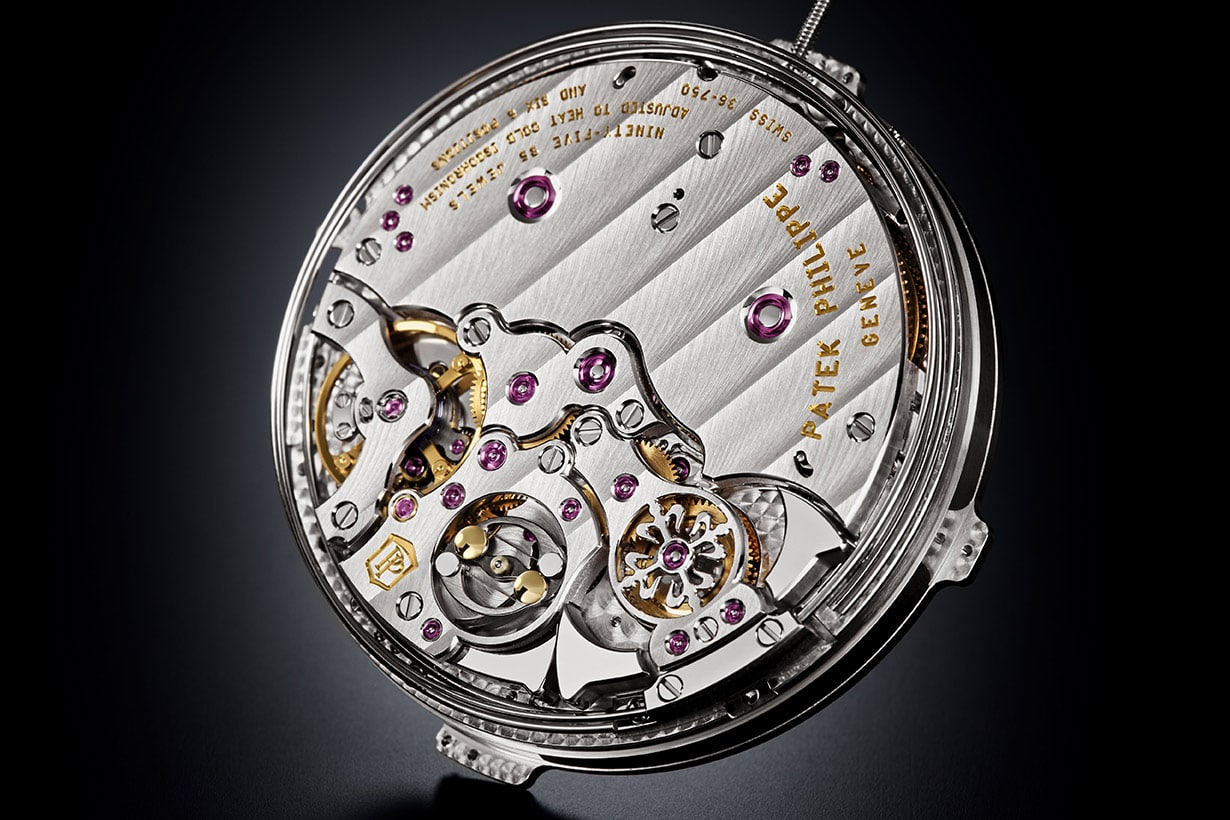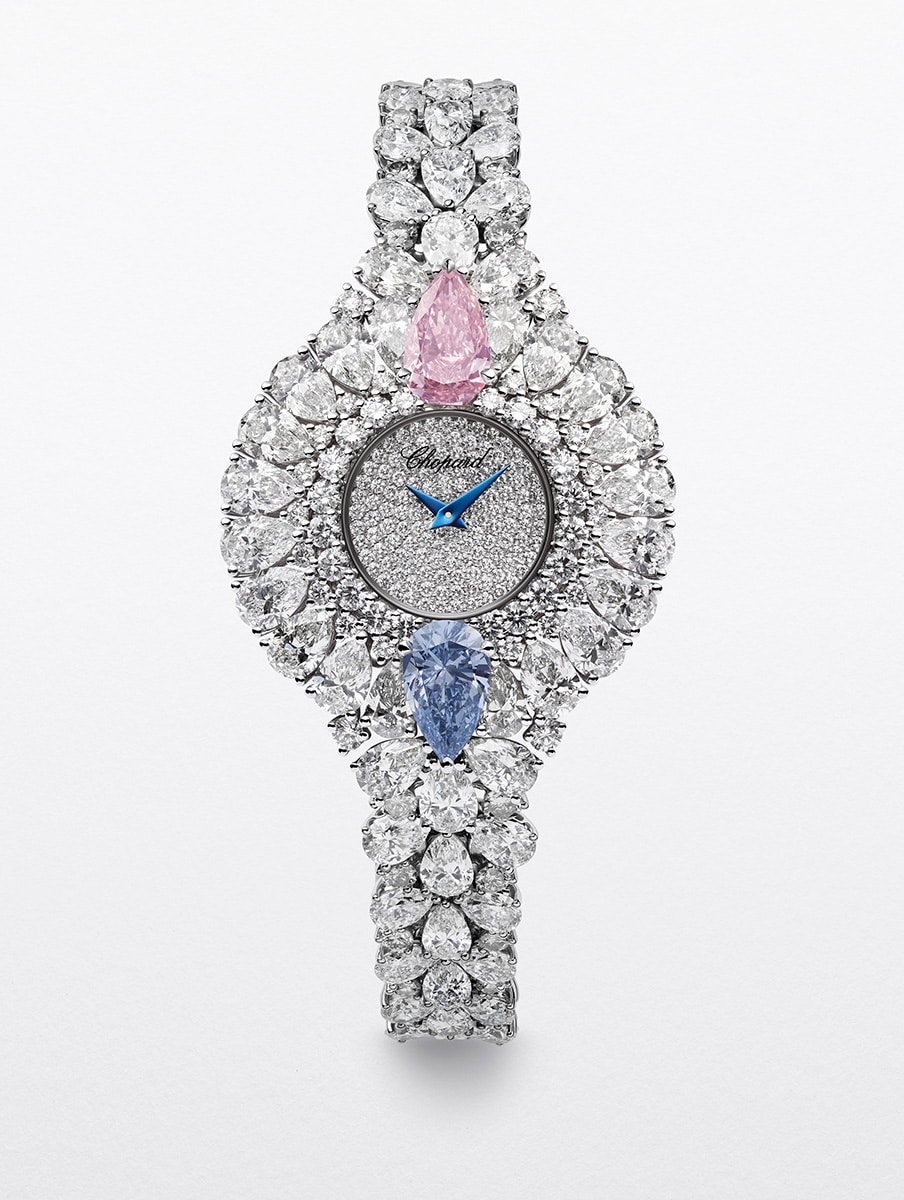Vacheron Constantin – Les Cabinotiers Armillary tourbillon perpetual calendar – Planetaria
- A single-piece edition Les Cabinotiers timepiece with a retrograde jumping perpetual calendar regulated by a double-axis tourbillon and complemented by a three-dimensional representation of the two hemispheres designed to provide 24-hour and day/night indications.
- A new Grand Complication movement, Calibre 1991, which took four years to develop
Geneva, April 7th 2021 – A highly technical single-piece edition, the Armillary tourbillon perpetual calendar – Planetaria watch stages sophisticated complications in a manner bearing a unique aesthetic signature. Equipped with a new Calibre 1991 in-house movement, this timepiece celebrates the astronomical function par excellence: the perpetual calendar with precision moon phases. With its retrograde date appearing along a right-hand arc on the dial, as well as its circular retrograde month and day indications framing depictions of the Earth’s two hemispheres providing day/night indications, this timepiece is also regulated by a double-axis tourbillon. This new model, presented at Watches & Wonders 2021, is part of the theme of the Maison for 2021 : entitled Classic with a Twist, it highlights Vacheron Constantin’s creative energy, guided by an identity that celebrates a heritage and dares to deliver the unexpected.

Les Cabinotiers
Armillary tourbillon perpetual calendar – Planetaria
9820C/000R-B707
Calibre 1991, a new Grand Complication movement
Extraordinarily complex with its 745 components, mechanical manual-winding Calibre 1991 is the result of a four-year development process. It powers two rotating globes representing the Earth’s hemispheres, regulated by a double-axis armillary tourbillon. It corresponds to an innovative interpretation of the perpetual calendar, the astronomical complication par excellence which “reads off” the specificities of the calendar without requiring any adjustments before 2100. Another distinctive feature lies in the retrograde displays of the perpetual calendar’s days, dates and months. Mounted on ball bearings to ensure smooth, linear operation, the date display follows a circular arc to the right of the hours and minutes dial. In keeping with the watch’s astronomical vocation, the centre of the timekeeping dial bearing hour-markers is dedicated to the moon phases. These appear according to their respective evolution in the two hemispheres, in perfect symmetry with the two rotating globes, and with a degree of precision requiring a mere one-day correction every 122 years.
The perpetual calendar functions continue with the leap year appearing through a 5 o’clock aperture, along with circular day and month indications at 12 o’clock and 6 o’clock based on a jumping retrograde pallet-type display system. In the centre of the two counters, the two globes representing the Northern and Southern hemispheres perform complete rotations in opposite directions on a graduated 24-hour scale around the rim. The shaded areas of the domed sapphire crystal used for the day/night indication have been positioned in such a way that the armillary tourbillon resembles a sun darting its rays across the surface of the Earth.
Making the super-thin (0.35 mm) sapphire crystal featuring the domes and extending over the retrograde date display required a great deal of ingenuity. A crown-integrated pusher enables simultaneous adjustment of the world-time function of the two globes.
In an additional challenge for the movement’s designers, who are consistently concerned with achieving optimal balance and aesthetic appeal, they had to imagine and design a retrograde system for the day and month indications leaving sufficiently ample space to admire the beating of the bi-axial armillary tourbillon with its spherical balance-spring.

Les Cabinotiers
Armillary tourbillon perpetual calendar – Planetaria
9820C/000R-B707
Nods to historical master-watchmakers
The complex mechanics of Calibre 1991 are perfectly epitomised in its armillary tourbillon, a technical challenge as well as a spectacular sight in itself. This movement regulating device endowed with a 60-hour power reserve benefited from the research conducted on the world’s most complicated timepiece, Reference 57260. This construction is positioned on the left side of the piece, beneath the sapphire crystal ‘bubble’. Forming a sphere in perpetual motion, the tourbillon was named “armillary” in reference to French watchmaker Antide Janvier, who towards the end of the 18th century invented a moving planetary sphere known as an armillary, and regarded as one of his most accomplished masterpieces.
Another technical feature of the mechanism of this piece is the cylindrical balance-spring coupled with the balance. Invented by Jacques-Frédéric Houriet in 1814, this variant devoid of terminal curves gives the tourbillon a perfectly concentric beat, thereby ensuring enhanced isochronism. In order to transmit to this balance-spring the impulses corresponding to a frequency of 18,000 vibrations per hour (2.5 Hz), Vacheron Constantin has developed an escapement consisting of a silicon escape-wheel and a lever with diamond pallets, materials reducing friction without any need for lubrication and thus increasing the precision of the mechanism.

Les Cabinotiers
Armillary tourbillon perpetual calendar – Planetaria
9820C/000R-B707
Haute Horlogerie finishes
Every single detail of the finishes gracing this single-piece edition highlights this ingenious astronomical orchestration of time. Two galvanically treated titanium globes weighing barely 0.12 grams rotate gently on the finely grained dial. The 24-hour counters surrounding them are circular satin-finished with transfers, while the day, month and date indications are printed beneath the sapphire crystal. The timekeeping dial features Roman numerals in the form of polished gold appliques. These Haute Horlogerie finishes are beautifully framed by an 18K 5N pink gold case measuring 46 mm in diameter and fitted with an alligator leather strap.
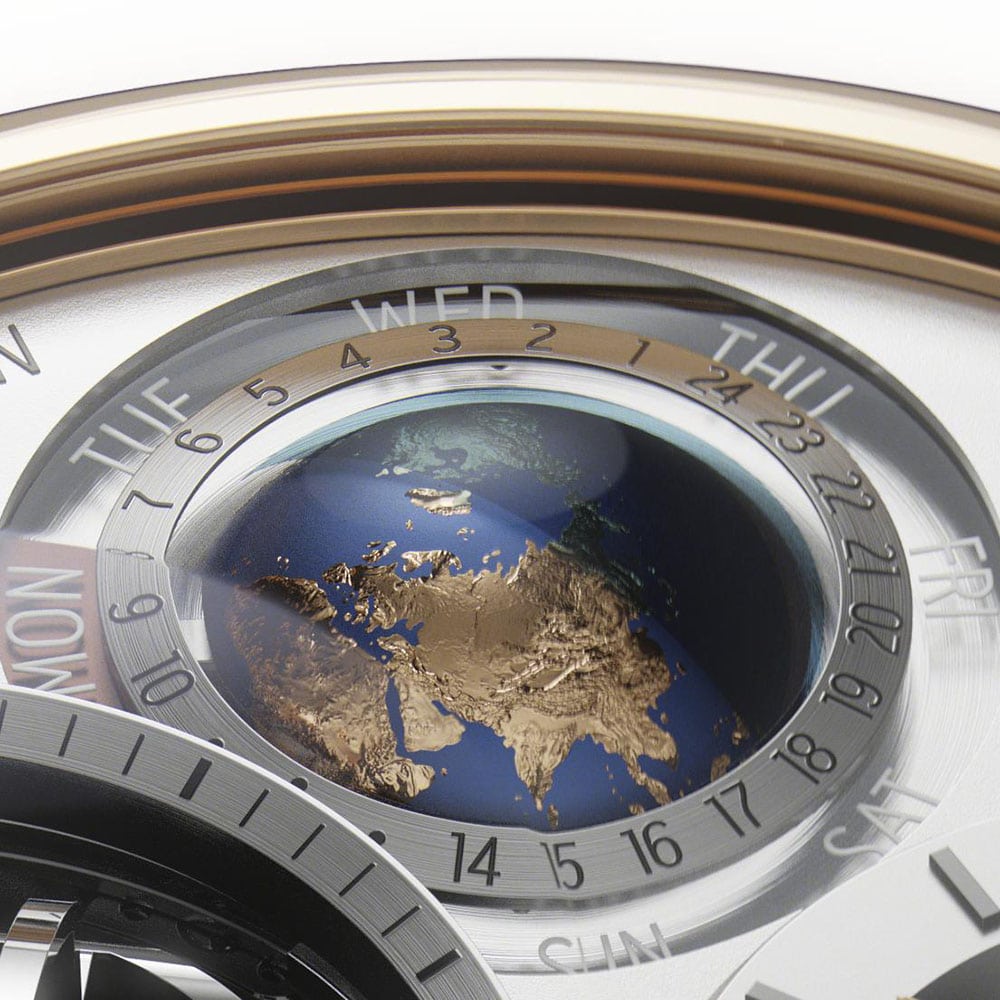
Les Cabinotiers
Armillary tourbillon perpetual calendar – Planetaria
9820C/000R-B707
“Le Temps Céleste”
Each year, the Les Cabinotiers department unveils a range of single-piece editions relating to a theme cherished by Vacheron Constantin. The year 2021 is dedicated to “Le Temps Céleste” (which means Celestial Time), with timepieces referring to the astronomical origins of time measurement.
From the dawn of civilisations, the cycle of days and seasons, the evolution of constellations in the night sky, the phases of the moon and eclipses have exerted an almost mystical fascination. Eager to unravel the mysteries of the universe, the first human beings found in mythological tales a cosmogony blending legends with poetry. At a very early stage, the first scientific minds attempted to decipher the rhythms of Nature and to organise them according to predictable patterns.
It was from these calculations, and with the appearance of writing, that the first calendars were born, before the Babylonian sexagesimal system gave meaning to the physical division of time into units of angle. Traditional watchmaking is a direct heir to this rigorous and scientific approach, expressed today on watches with depictions of the calendar, the sky chart, moon phases, tides and seasons, and even civil, solar and sidereal time with their differentials. Vacheron Constantin has nevertheless sought to endow these genuine observation instruments with all the charm of the founding myths through the subtlety of its craftsmanship, through its work in guilloché engraving and the engraving of symbolic motifs, or in the “stellar” glittering of gemset stones. This new Les Cabinotiers range is the expression of exceptional expertise in astronomical watches, dedicated to the poetry of time.
Vacheron Constantin and astronomical watches
Astronomical watches enjoy a rich and longstanding tradition within the Maison. The Vacheron Constantin archives reveal a first perpetual calendar in 1884, integrated into a double-sided yellow gold pocket watch, now part of the Maison’s private collection. This was the beginning of a mechanical “epic” that would singularly take shape at the turn of the century. In 1900, the Maison set up a workshop exclusively dedicated to the assembly of watches with complications, often incorporating astronomical functions. Orders flooded in for complicated and even very complicated watches. The perpetual calendar was then combined with other technical feats such as those enriching a 1905 pocket watch comprising a minute repeater, split-seconds chronograph and perpetual calendar with phases and age of the moon.
Delivered in 1929, the pocket watch made for King Fouad I of Egypt with chronograph, perpetual calendar, Grande and Petite Sonnerie and minute repeater functions is characteristic of this golden age. This exceptional watchmaking expertise, later applied to wristwatches, would be powerfully expressed in the Tour de l’Île with its 16 horological and astronomical complications, produced in 2005 to mark the 250th anniversary of the Maison. It features a a sky chart, a complication that has become a speciality of Vacheron Constantin. Reference 57260, which has 57 complications, also features a sky chart, notably accompanied by sidereal time and a secular Hebrew calendar. In 2017, Vacheron Constantin once again innovated with Calibre 3600, powering displays of civil, solar and sidereal time, the latter synchronised with a mobile representation of constellations.
Les Cabinotiers: single-piece editions
In the Vacheron Constantin universe, Les Cabinotiers represents a department in its own right dedicated to the personalisation of Grand Complication models and single-piece editions. This tradition dates back to the 18th century, an age when master-watchmakers were called cabinotiers and worked in ateliers bathed in natural light, known as cabinets and located on the top floors of Geneva’s buildings. In the hands of these learned artisans, open to the new ideas of the Enlightenment, exceptional timepieces were born, inspired by astronomy, mechanical engineering and the arts. This expertise, which constitutes the great Geneva watchmaking tradition, has been flowing through Vacheron Constantin’s veins since 1755.
Classic with a Twist
Vacheron Constantin’s creativity has always remained closely attuned to its time while evoking its memories. This byword for elegance, adopted by each watchmaker, artisan and designer throughout the years and centuries, celebrates heritage and dares to explore the unexpected. Poised at the intersection between technical virtuosity and aesthetic refinement, the enduring allure of Vacheron Constantin timepieces makes its way unscathed through passing eras. Because timelessness cannot be achieved merely by complying with the canons of traditional watchmaking, each creation is tinged with a touch of boldness revealed in the smallest details. Special displays, offset indications, specific chamfering of all components, hand-crafted finishing and the complexity of a mechanism are just a few examples of this expertise. The result is a very personal field of expression where technique and style converge in a subtle harmony between the conventional and the atypical.
————————————————————————————
Sum-up
The Les Cabinotiers Tourbillon armillary perpetual calendar – Planetaria watch demonstrates technical mastery of watches featuring extreme astronomic and aesthetic complexity, with the integration on the dial of rotating globes. Equipped with the new manual-winding Calibre 1991 stemming from four years of development, this single-piece edition features a completely original perpetual calendar with a retrograde display of dates, days and months. This timepiece also offers a rare three-dimensional representation of the Earth’s Northern and Southern hemispheres. The two titanium globes perform a full rotation in 24 hours, complete with a day/night indication. The regulation of the movement is based on the same concern for technicality expressed by a double-axis armillary tourbillon whose nested aluminium carriages move at a speed of 60 seconds per rotation. This timepiece is presented in an 18K 5N pink gold case measuring 46 mm in diameter, fitted with a dark brown alligator leather strap.

TECHNICAL DATA
Les Cabinotiers Armillary tourbillon perpetual calendar – Planetaria
Reference
9820C/000R-B707
Calibre
1991
Developed and manufactured by Vacheron Constantin
Mechanical manual winding
35 mm diameter, 11.20 mm thick
Movement power reserve: approximately 60h
2.5 Hz (18,000 vibrations/hour)
745 components
94 jewels
Hallmark of Geneva certified timepiece
Indications
Hours and minutes
Double-axis armillary tourbillon
Perpetual calendar
Retrograde date, day and month
Moon phases in Northern and Southern hemispheres
Northern and Southern day/night and 24h indication
Case
18K 5N pink gold
46 mm diameter, 20.20 mm thick
Dials (front & back)
18K gold, opaline silvered dial
18k 5N pink gold hands
Strap
Dark brown Mississippiensis alligator leather with alligator leather inner shell, hand-stitched, saddle-finish, large square scales
Clasp
18K 5N pink gold folding clasp
Presentation box
Les Cabinotiers model
Unique piece
“Les Cabinotiers”, “Pièce unique”, “AC” hallmark engraved on caseback



















